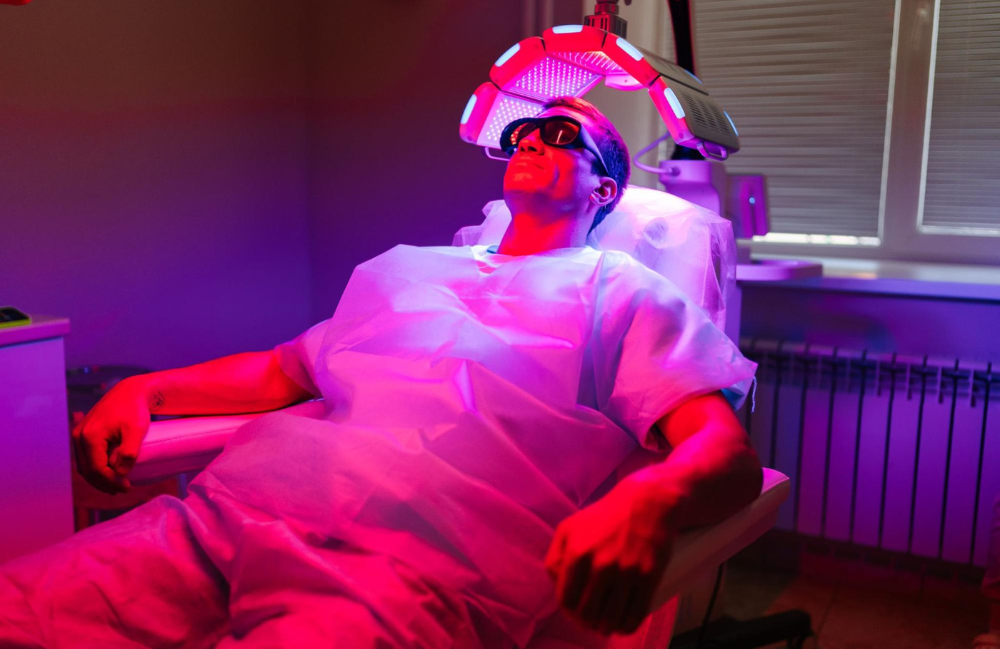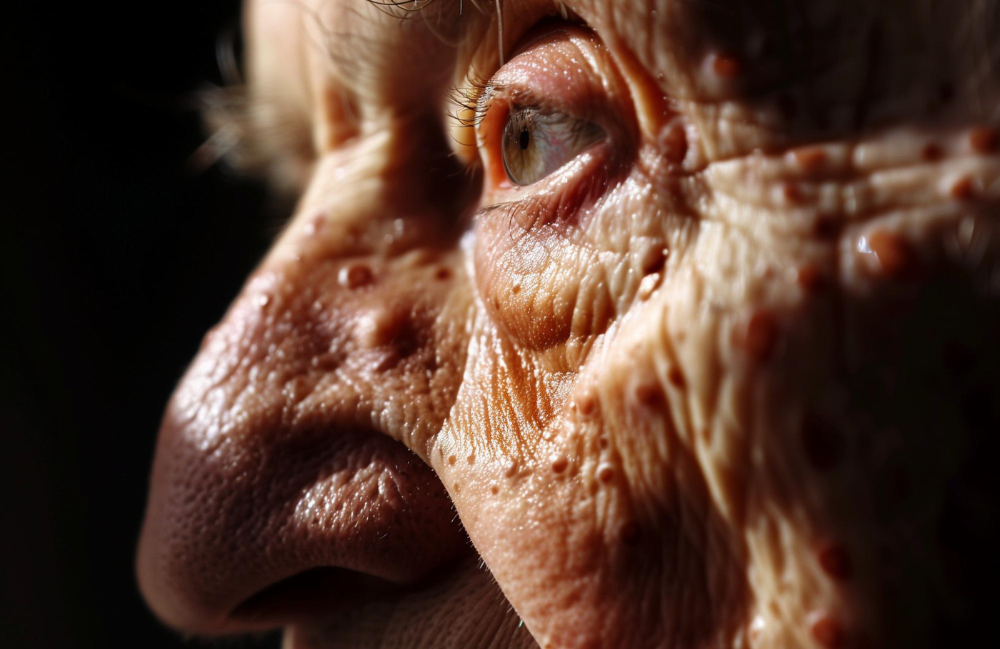
What is Photodynamic Therapy?
Photodynamic Therapy (PDT) is a medical treatment that combines a photosensitizing agent (a medication that makes cells sensitive to light) with a specific type of light. When activated by light, the photosensitizing agent destroys targeted cells, making it an effective therapy for certain cancers, pre-cancers, and skin conditions such as actinic keratosis and acne.
How Does Photodynamic Therapy Work?
- Application of Photosensitizing Agent. A special medication is applied to the skin, which makes targeted cells sensitive to light. This agent is absorbed by abnormal cells over a period of time, preparing them for the next stage.
- Activation with Light. Once the photosensitizing agent has been absorbed, the area is exposed to a specific wavelength of light. This light activates the agent, causing a chemical reaction that destroys the targeted cells.
- Controlled Cell Destruction. The combination of light and the photosensitizing agent destroys the abnormal cells while leaving surrounding healthy cells unharmed.
- Healing and Regeneration. Over time, the body naturally sheds the treated cells, allowing healthy skin to replace them. Most patients see significant improvement after a few treatments.
PDT sessions are typically quick and minimally invasive, with patients experiencing only mild discomfort. The precision of this therapy makes it a preferred choice for treating localized skin issues with minimal impact on healthy tissue.
Importance of Photodynamic Therapy
Photodynamic Therapy is valuable for various medical and cosmetic reasons, offering targeted treatment with minimal side effects. Here’s why PDT is an important option in dermatological care:
- Effective for Pre-Cancerous Lesions. PDT is widely used for treating actinic keratosis, a pre-cancerous condition that can develop into skin cancer if untreated.
- Reduces Acne and Oil Production. For those with severe acne, PDT can help reduce oil production and clear up active acne, improving skin texture.
- Non-Invasive Alternative. PDT is a non-surgical option, reducing risks and recovery time compared to more invasive procedures.
- Minimal Scarring. PDT targets only abnormal cells, which means minimal risk of scarring, even in visible areas.
- Customizable Treatment. The photosensitizing agent and light exposure are tailored to the patient’s condition, providing a personalized treatment plan.
- Quick Recovery. Most patients experience only mild redness and sensitivity post-treatment, allowing for a faster return to daily activities.

FAQs
Is PDT painful?
Patients may feel a mild tingling or burning sensation during light exposure, but discomfort is generally minimal.
How many PDT sessions are needed?
The number of sessions depends on the condition, but most patients require multiple treatments for optimal results.
Are there any side effects?
Common side effects include temporary redness, swelling, and sensitivity to sunlight.
Can PDT be used for all skin types?
While PDT is suitable for most skin types, a dermatologist will assess individual suitability based on skin condition and type.
How soon can I expect results?
Results vary, but many patients notice improvements within a few weeks as the body sheds treated cells.
Hear from
Real Patients

Schedule Your Consultation Today
If you are seeking an effective, minimally invasive treatment for pre-cancerous lesions, acne, or other skin conditions, photodynamic therapy may be the solution you need. Contact Metropolis Dermatology in San Jose, CA, today to schedule a consultation and find out how PDT can enhance your skin health and confidence!
